Bright Ideas: Mastering the Art of Downlight Placement
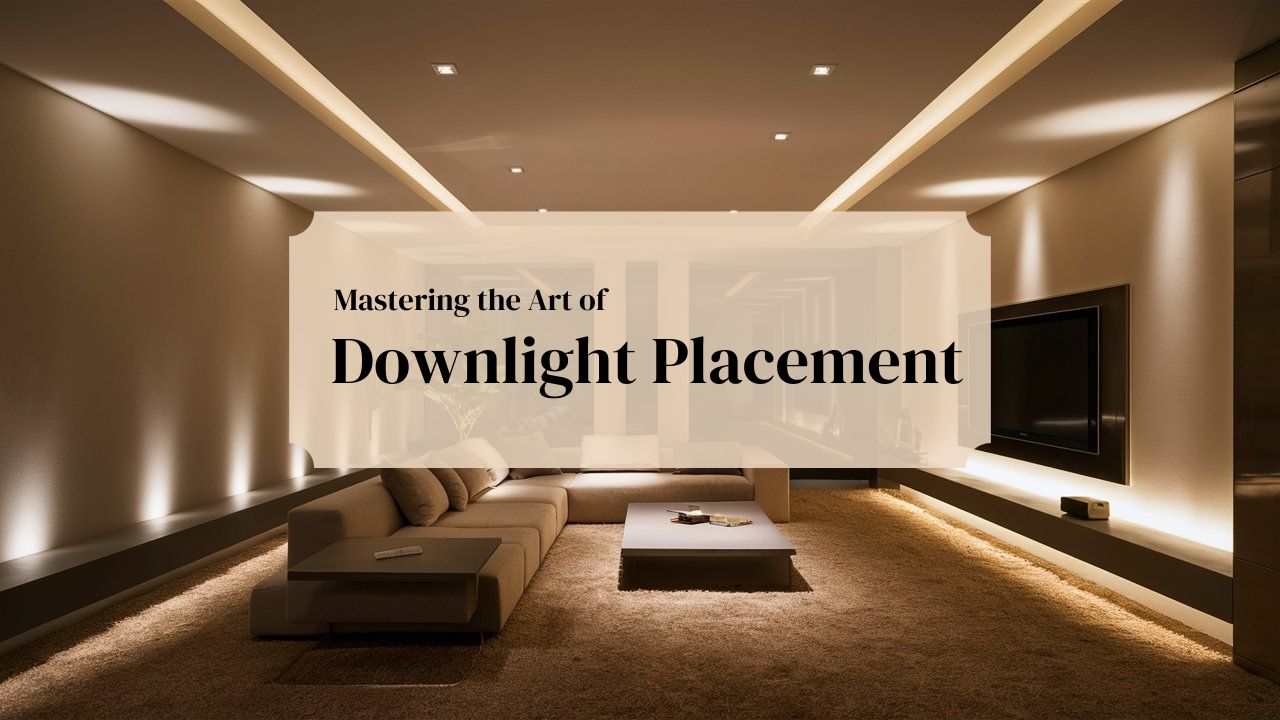
Lighting can make or break the ambience of a room. Whether you're aiming for a cosy, intimate space or a bright, functional environment, the right lighting plays a crucial role. With their sleek and minimalistic design, downlights are a popular choice for modern homes. But how do you position them to achieve the perfect balance of visibility and atmosphere? In this guide, we'll walk you through the art of spacing out downlights to enhance your living spaces, using expert advice from Meteor Electrical.
Let’s begin!
What are Downlights?
Downlights are recessed fixtures designed to cast light directly downwards, illuminating spaces from above. This lighting system is typically integrated into the ceiling, offering a sleek, minimalistic appearance that blends seamlessly with any decor.
Due to their versatility and ability to provide both functional lighting and aesthetic appeal, downlights are a popular choice for kitchens, bathrooms, and living rooms. Their design not only enhances the visual appeal of a room but also ensures efficient lighting distribution.
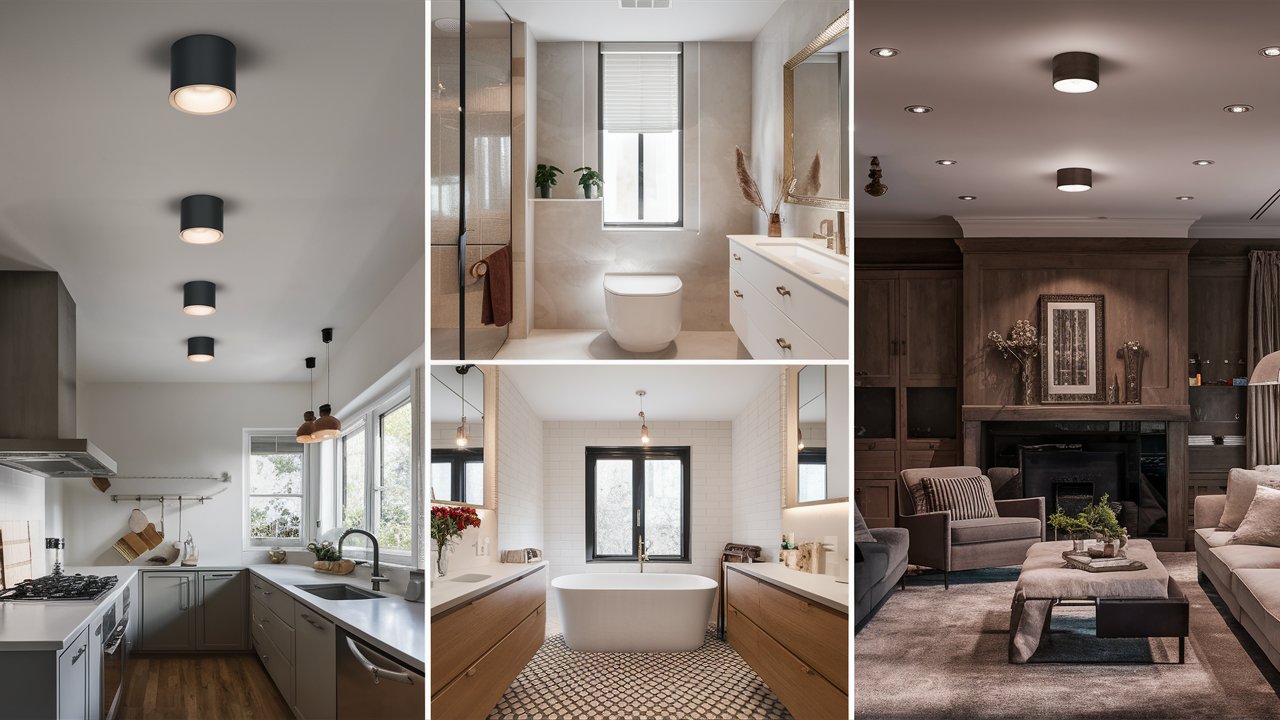
Benefits of Downlights
- Energy Efficiency: Downlights are an excellent choice for saving energy and reducing costs. Modern LED downlights consume significantly less power than traditional lighting options, making them an eco-friendly and cost-effective solution for your home (Energy.gov).
- Space Maximization: Due to their recessed design, downlights free up space and create a clean, uncluttered look. This makes them ideal for rooms where space is at a premium, such as bathrooms and kitchens.
- Versatility and Aesthetic Appeal: Downlights offer a versatile lighting solution that can create a variety of atmospheres, from bright and functional to warm and cosy. Their discreet appearance seamlessly complements any interior style (Houzz).
- Enhanced Ambiance: When strategically placed, downlights can significantly enhance a room's ambience. They can highlight specific areas, create focal points, and even make small spaces appear larger (Architectural Digest).
By incorporating these benefits, downlights improve a room's functionality and contribute to a more pleasant and inviting atmosphere. Downlights are a versatile and stylish lighting solution, whether you're looking to illuminate your kitchen countertops, brighten up your bathroom, or create a cosy living room environment.
How to Position Downlights
Properly positioned downlights are crucial for achieving ambient and task lighting, ensuring your spaces are well-lit and functional. A well-thought-out layout is essential for positioning downlights in rooms like bedrooms, living rooms, bathrooms, and kitchens. The strategic placement of downlights enhances illumination and contributes to the room's overall ambience and visual appeal.
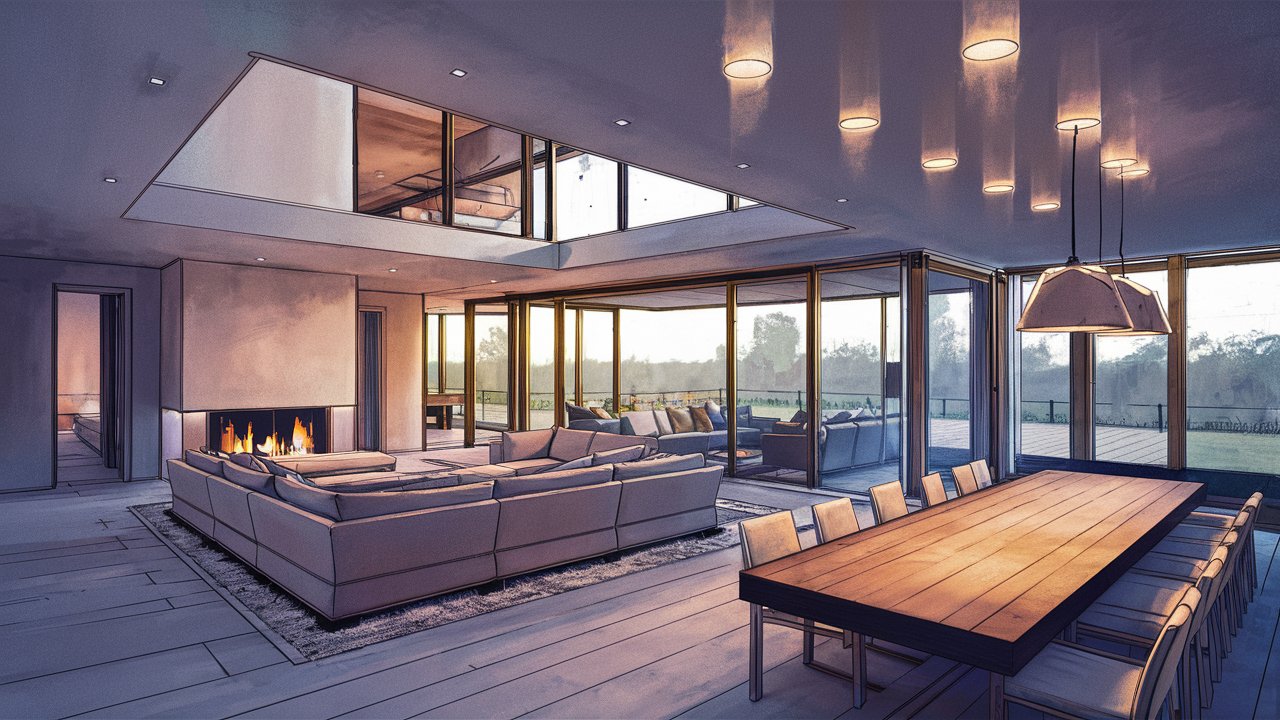
Downlight Layout Guide
Ceiling Height and Lux Levels
For ceilings around 8 feet (2.5m), selecting the appropriate lux levels for each room type is crucial. The Chartered Institution of Building Services Engineers (CIBSE) recommends different lux levels for domestic spaces to ensure optimal lighting.
Example Calculation:
Room Type: Bedroom
Required Lux Level: 120 lux
Room Size: 5 x 4 meters (20 square meters)
To calculate the total lumens needed:
20 sq.m X 120 lux = 2,400 lumens
This means you would need approximately six downlights, each providing around 400 lumens, such as the Kosnic fittings (550 lumens).
Spacing and Positioning
Space downlights evenly across the room to ensure consistent lighting. A general rule is to position downlights approximately half a meter from the walls to prevent unwanted shadows and make the room appear larger and brighter.
Ensure that downlights are placed at regular intervals to avoid dark spots and to provide uniform light distribution. This is particularly important in rooms like kitchens and bathrooms where bright, even lighting is essential for tasks (Home Lighting Guide).
Consider Reflections and Surface Colors
When planning your downlight layout, consider the reflective properties of your walls and floors. Darker finishes absorb more light, requiring additional lumens to achieve the desired brightness (Illuminating Engineering Society).
In contrast, lighter surfaces reflect more light, which can help enhance the overall brightness and reduce the number of downlights needed.
Following these guidelines, you can create a well-lit room that meets functional and aesthetic needs. Properly spaced downlights improve visibility and enhance the room's ambience, making your spaces more inviting and comfortable.
Using these expert tips and resources, you can ensure your downlights are optimally positioned to illuminate your home effectively. Whether you're planning lighting for a cosy bedroom or a bright kitchen, a well-designed downlight layout is key to achieving the perfect lighting environment.
How Many Downlights Are Needed in a Room?
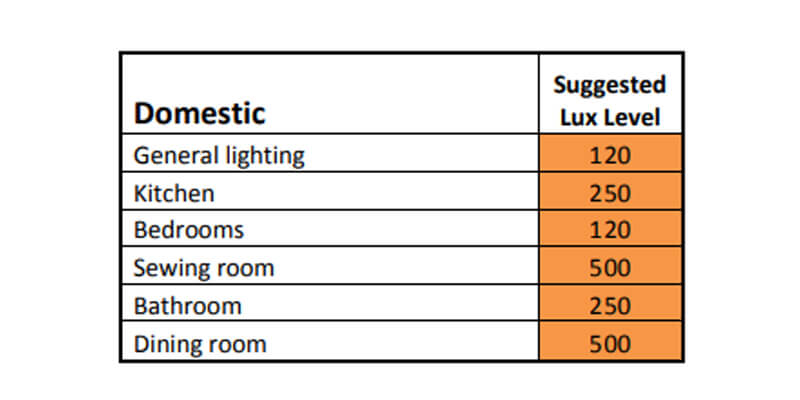
Determining the number of downlights required for a room involves considering several factors, including the room's size, purpose, and focal points. Proper planning ensures that the lighting is both functional and aesthetically pleasing.
Size and Shape of the Room
When designing the layout for recessed downlights, a “one size fits all” approach won't work. Each room may require a different amount of light based on its dimensions. Therefore, it's crucial to measure the room accurately to ensure the perfect lighting layout. For example, bathrooms need luminaires with at least an IP44 rating to ensure protection against moisture.
The Purpose of the Room
The purpose of the room significantly influences the required brightness. Understanding the specific needs of each space allows for strategic placement of downlights to create a functional lighting system.
- Living Rooms and Bedrooms: These relaxing spaces benefit from warm lighting to create a cozy atmosphere. The Mauna 3000K Fire-Rated Downlights are ideal for these areas, offering a soft, inviting glow (Houzz).
- Kitchens and Bathrooms: These functional spaces require bright, precise lighting. Kitchens, for instance, need higher lumens to illuminate work surfaces for meal preparation and cleaning. The Mauna 4000K Fire-Rated Downlights provide the cool, bright light necessary for these tasks (Architectural Digest).
Positioning Downlights in Different Rooms
Kitchens
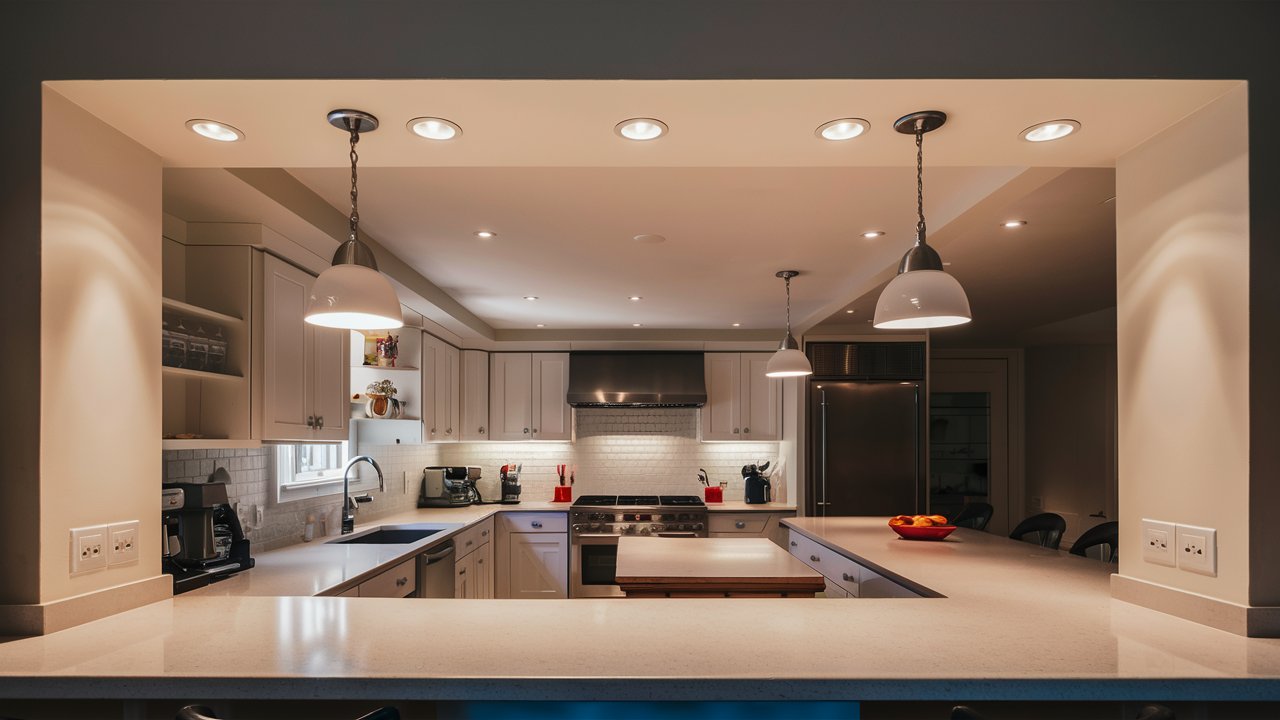
In the kitchen, bright lighting is crucial as it is the most functional room in the house. Downlights should be installed above work surfaces to enhance visibility. Careful placement ensures that light falls on the workspace rather than creating shadows. This consideration is essential to ensure that tasks like cooking are performed safely and efficiently.
Bathrooms
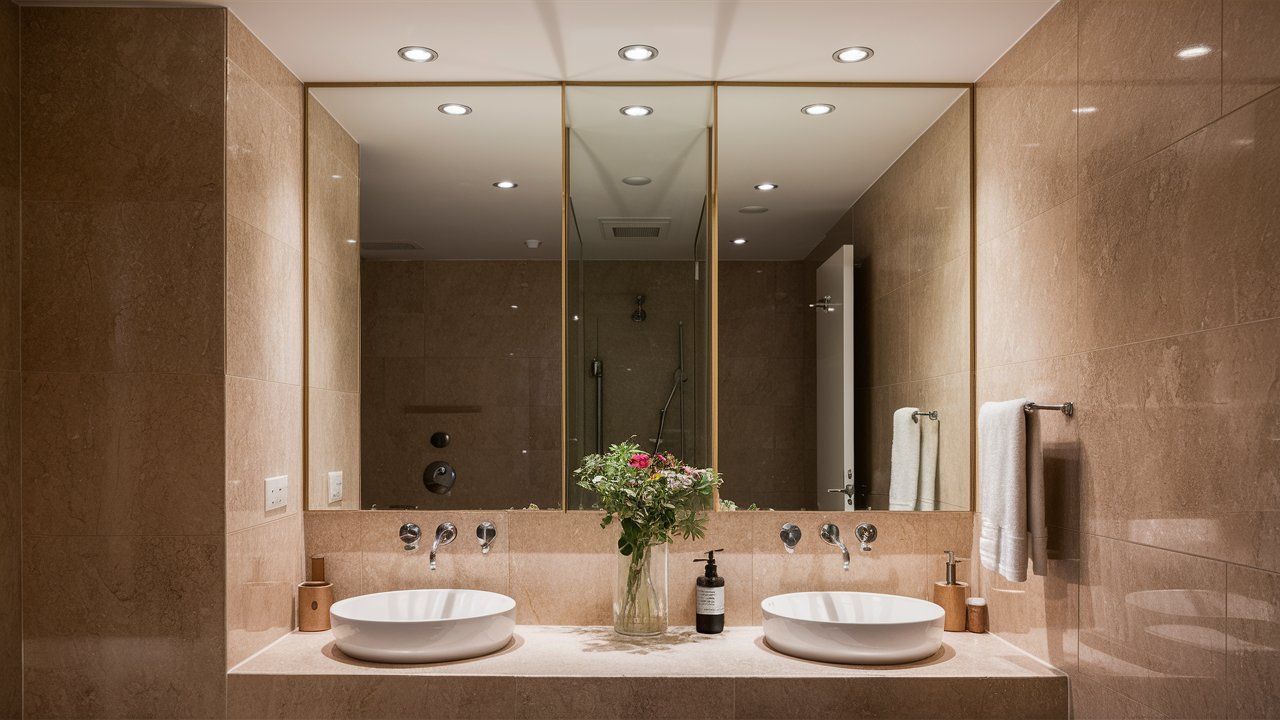
In bathrooms, downlights should be positioned to create a relaxing ambience while providing adequate task lighting. Placing downlights above mirrors can improve visibility for tasks like shaving and brushing teeth. Ensure that bathroom downlights have an IP65 rating or higher to protect against water and moisture (Lighting Industry Association).
Living Rooms
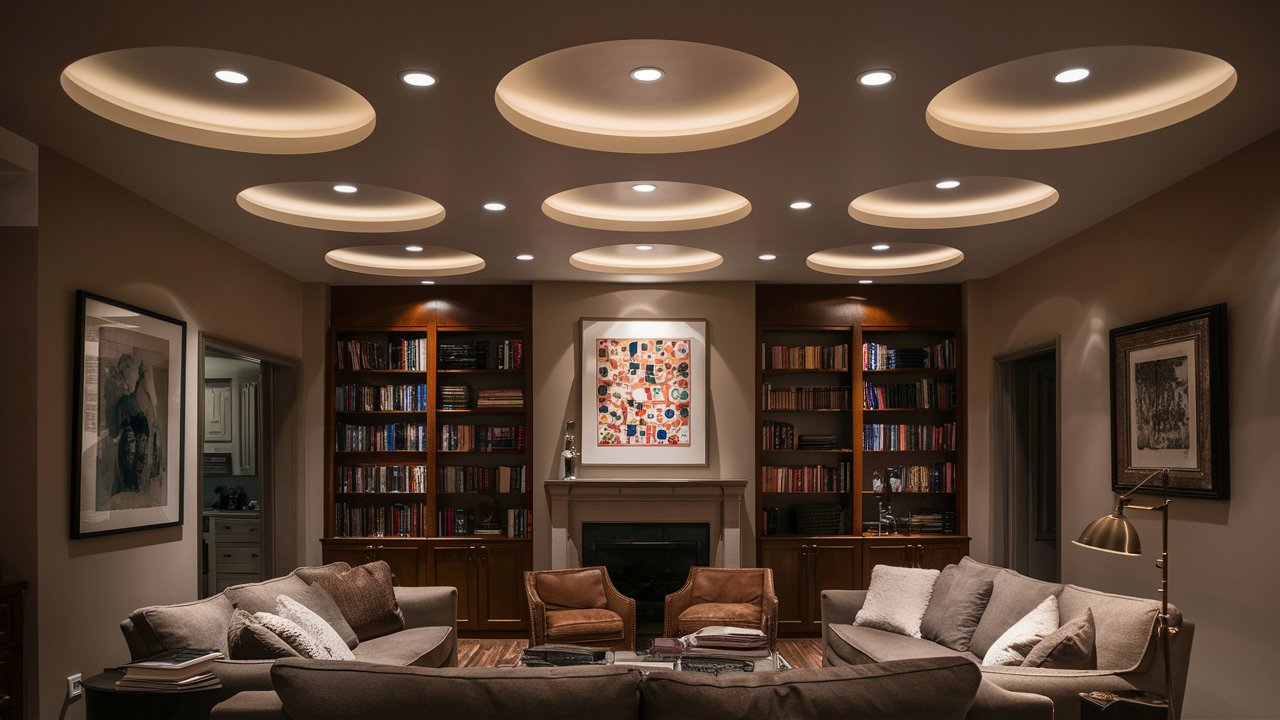
Living rooms are versatile spaces where people relax, watch TV, read, or spend time with loved ones. Downlights can create a warm ambience and highlight key features like paintings or bookshelves. They can also provide task lighting for activities like reading. The key is to balance ambient and task lighting to suit various activities (Home Lighting Guide).
Identifying Focal Points
Identify areas that require more light, such as sinks in bathrooms or worktops in kitchens. Use downlights to highlight these key features. Once these areas are well-lit, adjust the remaining downlights around them to ensure balanced illumination throughout the room.
Our Recommendation: Kosnic LED Downlights
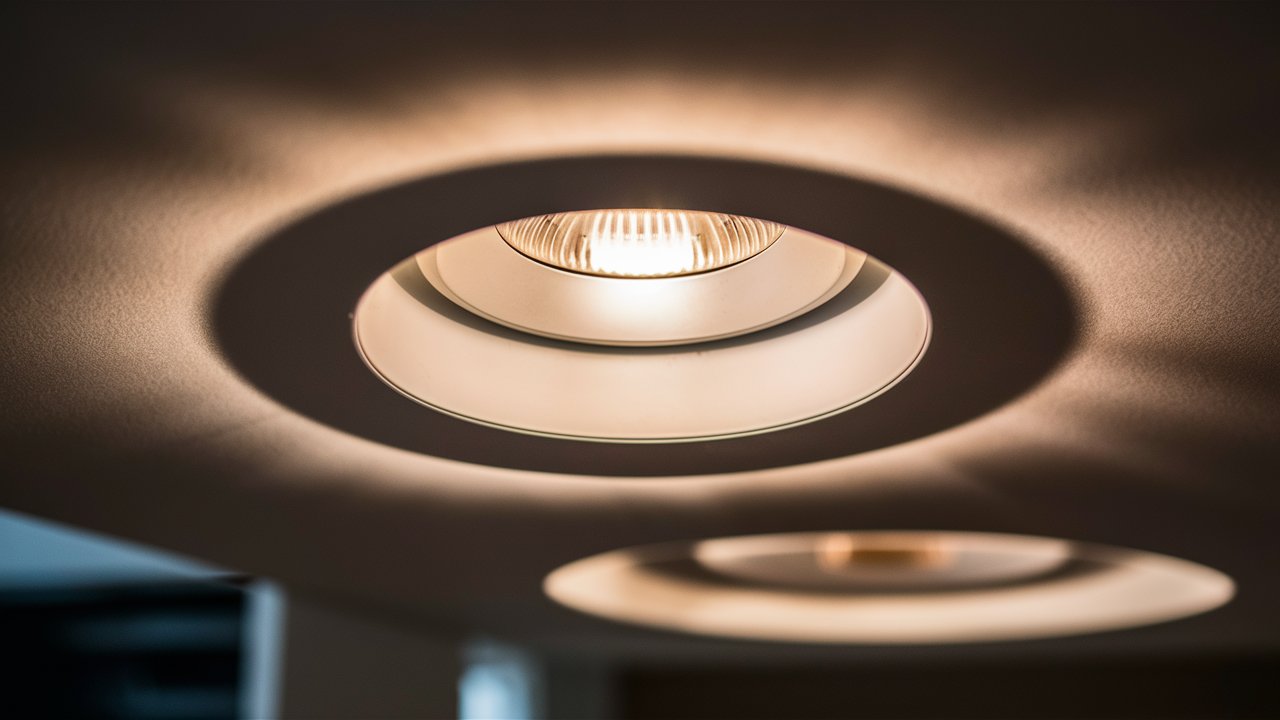
At Meteor Electrical, we offer a wide range of LED downlights from top brands. Our most popular choice, the Kosnic Nyos Circular LED Downlight, features:
- BS476 Part 21 Fire-Rated: 30, 60, and 90 minutes
- Colour Temperature: 3000K Warm White
- IP65 Rated: Suitable for bathrooms
- Integrated Dimmable Driver
- Compact Size: Installable under insulation layers
Conclusion
Choosing and positioning downlights can transform any space in your home, creating the perfect blend of functionality and ambience. Whether you're illuminating a cosy bedroom, a busy kitchen, or a relaxing bathroom, the right downlights make all the difference. By following the tips and guidelines provided in this blog, you can ensure your lighting is both effective and aesthetically pleasing.
At Meteor Electrical, we offer a wide range of high-quality LED downlights to suit every need and style. Explore our selection to find the perfect lighting solutions for your home. For more expert advice, guides, and how-tos on lighting and other electrical projects, be sure to check out our blog.
For personalized assistance or to learn more about our products, contact our lighting specialists via email at [email protected] or call us at 028 (048) 867 51515. Illuminate your home with Meteor Electrical—where quality meets innovation.
FAQ: Downlights
1. What are downlights, and where are they commonly used?
Downlights are recessed light fixtures designed to illuminate spaces from above, providing a clean and minimalistic look. They are commonly used in kitchens, bathrooms, and living rooms due to their versatile and efficient lighting capabilities.
2. How many downlights do I need for my room?
The number of downlights needed depends on the size, shape, and purpose of the room. For example, a 20 square meter bedroom typically requires around 2400 lumens, which can be achieved with approximately six downlights providing 400 lumens each.
3. What is the ideal spacing for downlights?
Downlights should be spaced evenly across the room to ensure uniform lighting. A general rule is to position them approximately half a meter away from walls to avoid creating shadows and to enhance the room's brightness.
4. What are the benefits of using downlights?
Downlights offer several benefits, including energy efficiency, space maximisation, versatile lighting options, and enhanced ambience. They can be used for both ambient and task lighting, making them suitable for various applications.
5. What IP rating should I look for in bathroom downlights?
For bathrooms, it is essential to use downlights with an IP65 rating or higher to ensure protection against water and moisture. This rating ensures the fixtures are safe to use in wet environments.
6. Can downlights be dimmed?
Yes, many modern downlights, such as the Kosnic Mauna Fire Rated Downlights, come with integrated dimmable drivers. This feature allows you to adjust the light intensity to suit different moods and tasks.
7. How do I choose the right colour temperature for my downlights?
The colour temperature of downlights should be chosen based on the room's purpose. Warm white (around 3000K) is ideal for living rooms and bedrooms to create a cosy atmosphere, while cool white (around 4000K) is better for kitchens and bathrooms where bright, clear light is needed.

